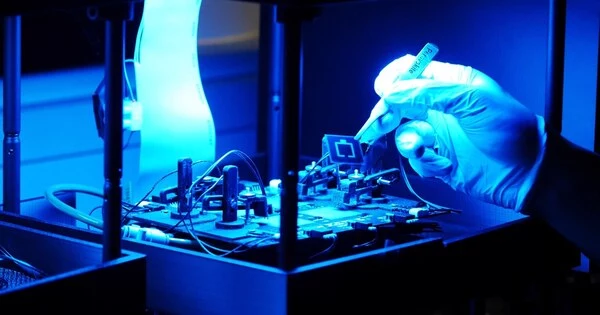Engineers have created a world first by creating the first back-contact micrometric photovoltaic cells. The University of Ottawa, in collaboration with national and international partners, has created a world-first by producing the first back-contact micrometric photovoltaic cells.
The cells, which are twice the thickness of a strand of hair, have significant advantages over conventional solar technologies, reducing electrode-induced shadowing by 95% and potentially lowering energy production costs by up to three times.
The technological breakthrough – led by Mathieu de Lafontaine, a postdoctoral researcher at the University of Ottawa and a part-time physics professor; and Karin Hinzer, vice-dean, research, and University Research Chair in Photonic Devices for Energy at the Faculty of Engineering – paves the way for a new era of miniaturization in the field of electronic devices.
Semiconductors are critical in the transition to a carbon-free economy. This is one of many research initiatives that we are pursuing at the Faculty of Engineering to achieve our societal goals.
Karin Hinzer
The University of Ottawa, the Université de Sherbrooke in Quebec, and the Laboratoire des Technologies de la Microélectronique in Grenoble, France collaborated on the micrometric photovoltaic cell manufacturing process.
“These micrometric photovoltaic cells have amazing properties, such as their extremely small size and significantly reduced shadowing.” “These properties lend themselves to a variety of applications, including densification of electronic devices, lightweight nuclear batteries for space exploration, and miniaturization of devices for telecommunications and the internet of things,” Hinzer says.

A breakthrough with huge potential
“This technological breakthrough promises significant benefits for society. Less expensive, more powerful solar cells will help accelerate the energy shift. Lightweight nuclear batteries will facilitate space exploration and miniaturization of devices will contribute to the growth of the Internet of things and lead to more powerful computers and smartphones,” de Lafontaine says.
“The development of these first back-contact micrometric photovoltaic cells is a crucial step in the miniaturization of electronic devices,” he adds.
“Semiconductors are critical in the transition to a carbon-free economy. This is one of many research initiatives that we are pursuing at the Faculty of Engineering to achieve our societal goals,” Hinzer says. Semiconductors are included in three of the Faculty of Engineering’s five research areas, namely information technologies, photonics, and emerging materials, as well as two of the University of Ottawa’s four strategic research areas, namely creating a sustainable environment and shaping the digital world.
This international collaboration between Canada and France exemplifies the importance of innovation and research in micromanufacturing, paving the way for a future in which technology will be more powerful and accessible than ever before. It also marks a historic step in the evolution of the global scientific and technology scene.
















